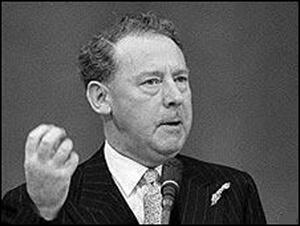On this day on 5th October
On this day in 1568 the trial against Mary, Queen of Scots. While in captivity Mary miscarried twins. Her captors discussed several options: "conditional restoration; enforced abdication and exile; enforced abdication, trial for murder, and life imprisonment; enforced abdication, trial for murder, and execution". Mary was presented with deeds of abdication, telling her that she would be killed if she did not sign. She eventually agreed to abdicate in favour of her one-year-old son James. Mary's illegitimate half-brother, James Stewart, 1st Earl of Moray, was made regent. Queen Elizabeth was in a difficut position. She did not want the Catholic claimant to the English throne living in the country. At the same time she could not use her military forces to reimpose Mary's rule on the protestant Scots; nor could she allow Mary to take refuge in France and Spain, where she would be used as a "valuable pawn in the power game against England". There was no alternative but to keep the Queen of Scots in honourable captivity and in 1569 she was sent to Tutbury Castle under the guardianship of the George Talbot, 6th Earl of Shrewsbury. Mary was permitted her own domestic staff and her chambers were decorated with fine tapestries and carpets.
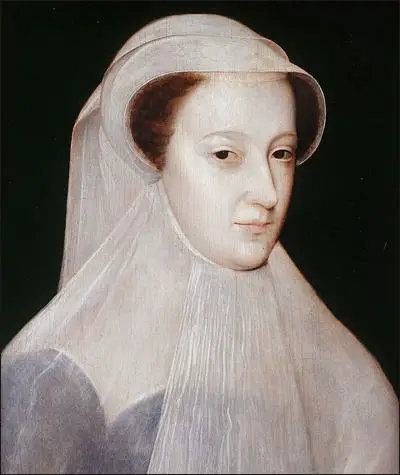
On this day in 1764 the political cartoonist, Isaac Cruikshank, was born. In the 1790s Cruikshank developed a reputation as an outstanding artist and was in great demand as a printmaker. Isaac etched the copper from his penciled designs, while his wife did the hand colouring and lettering. By 1808 the family moved to a large house in Dorset Street and had saved the great sum of £1,000. Isaac does not appear to have held strong opinions on politics and his prints appear to reflect the views of the person who commissioned the work. In some prints he praises the French Revolution and criticizes Pitt's attempts to censor the radicals, but in other work he savagely attacked reformers such as Tom Paine and Joseph Priestley. Cruikshank had ambitions to become a serious artist and had two paintings accepted by the Royal Academy. Isaac's greatest success as a teacher was with his own son George Cruikshank became Britain's most important caricaturists of the 19th century. Isaac Cruikshank died in April, 1811. The death certificate gives the cause of death as "decline", which often meant tuberculosis. A friend, Samuel Redgrave said he died of the severe cold that winter but his son claimed that it was alcohol that killed him.
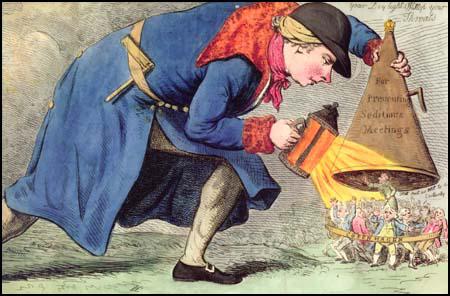
On this day in 1877 Chief Joseph surrenders, ending the Nez Perce War. General Otis Howard instructed Chief Joseph and the Nez Percé tribe to move from their tribal lands in Oregon. Joseph eventually agreed to leave the Wallowa Valley and along with 350 followers settled in Whitebird Creek in Idaho. Around 190 young men rebelled against this decision and attacked white settlers in what became known as the Nez Perce War. Joseph's brother, Sousouquee, was killed during this fighting. Although he had no experience as a warrior, Joseph took part in the battles at White Bird Canyon (17th June), Clearwater (11th July) and at Bear Paw Mountain (30th September). Chief Joseph and his men began a 1,300 mile march to Canada. However, on 5th October, 1877, the Nez Percé were surrounded by troops only 30 miles from the Canadian border. Joseph now agreed to take part in negotiations with General Nelson Miles. During the meeting Joseph was seized and beaten-up. Nez Perce warriors retaliated by capturing Lieutenant Lovell Jerome. A few weeks later Joseph was released in exchange for Lieutenant Jerome. Chief Joseph continued to negotiate with General Miles. He also visited Washington where he met President William McKinley and President Theodore Roosevelt . Eventually some members of the Nez Percé tribe were allowed to return home but others were forced to live on the Colville Reservation. Joseph remained with them and did what he could to encourage his people to go to school and to discourage gambling and drunkenness. In 1885 Joseph and his people were forced to move again and this time they were settled in a reservation in the State of Washington. Chief Joseph died at the Colville Reservation on 21st September, 1904.
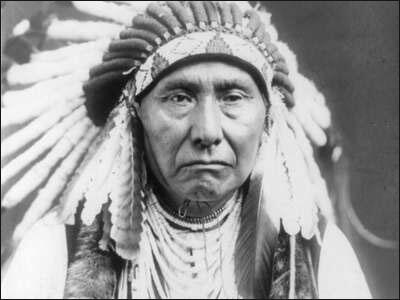
On this day in 1892 four members of the Dalton Gang are killed during a bank holdup. In 1891 Emmett Dalton, Bob Dalton, William Dalton and Grattan Dalton robbed a train just outside of Los Angeles. After the gang stole $17,000 robbed a train at Pryor Creek on 14th July, 1892, a prize of $5,000 a head on the Daltons. On 5th October, 1892, the gang decided to rob two banks in their home town of Coffeyville. Emmett and Bob went into the First National Bank while Grattan Dalton, Bill Powers and Dick Bradwell dealt with the Condon Bank. The men were spotted by a passerby, Aleck McKenna, who quickly alerted other members of the town. The men of Coffeyville armed themselves with rifles and waited for the Dalton gang to leave the banks. In the shoot-out that followed, four members of the gang, Grattan Dalton, Bob Dalton, Bill Powers and Dick Broadwell were killed.
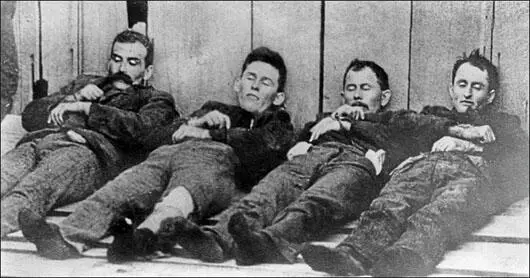
On this day in 1914 first aerial combat (called dogfights) of the First World War resulting in a German aircraft shot down by French pilot Louis Quenault. As the war broke out not long after the aeroplane had been invented, there had not been time to develop guns which could be built into the body of a plane. The first fighter planes were only equipped with machine-guns which were fixed onto the top wing. These early fighter aircraft had two two seats, with a man sitting in the rear controlling the guns. Dogfights were extremely difficult because the pilot would have to dodge other enemy aircraft while listening to the commands of the gunner as to where to fly to get the enemy into his sights.
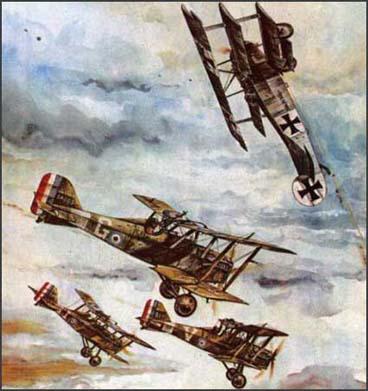
On this day in 1916 Adolf Hitler was wounded in the left thigh during the Battle of the Somme. A shell exploded in the dispatch runners' dug-out, killing and wounding several of them. His close friend, Ernst Schmidt, was also injured in the blast. After treatment in a field hospital, he spent almost two months in the Red Cross hospital at Beelitz, near Berlin. Hitler was appalled to hear men in the hospital bragging about how they had managed to inflict minor injuries on themselves to make sure they could escape from the Western Front. In January, 1917, Hitler wrote to the regiment's adjutant, Fritz Wiedemann, for permission to return "to the 16th Reserve Infantry Regiment" and serve with his "former comrades". Hitler also wrote to Sergeant Max Amann to see if he could use his influence to be reassigned to his regiment, his "elective family". Hitler later recalled that his regiment had taught him "the glorious meaning of a male community". Hitler was allowed rejoin his regiment on 5th March 1917.
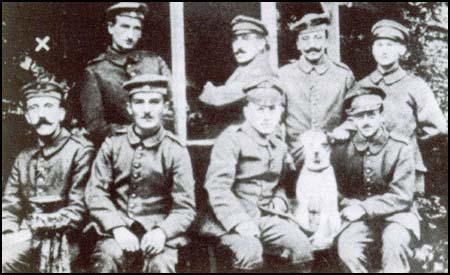
On this day in 1918 Roland Garros was shot down and killed at Vouziers. An experienced pilot, Garros was the first Frenchman to cross the Mediterranean by air. On the outbreak of the First World War, Garros was sent to serve on the Western Front. Garros realised that he would have more success in dogfights if he could find a way of firing a machine-gun through the propeller. Working with Raymond Saulnier, a French aircraft manufacturer, Garros, added deflector plates to the blades of the propeller of his Morane-Saulnier. These small wedges of toughened steel diverted the passage of those bullets which struck the blades. Now able to use a forward-firing machine-gun, went out searching for his first victim. On 1st April 1915, Garros approached an German Albatros B II reconnaissance aircraft. The German pilot was surprised when Garros approached him head-on. The accepted air fighting strategy at the time was to take 'pot-shots' with a revolver or rifle. Instead Garros shot down the Albatros through his whirling propeller. In the next two weeks Garros shot down four more enemy aircraft. However, the success was short-lived because on 18th April, a rifleman defending Courtrai railway station, managed to fracture the petrol pipe of the aircraft that Garros was flying. Garros was forced to land behind the German front-line and before he could set-fire to his machine it was captured by the Germans. After finding out about Garros' invention, German pilots began using these deflector plates on the blades of their propellers. In 1918 Garros escaped from Germany and returned to active service on the Western Front, but was killed a few weeks later.
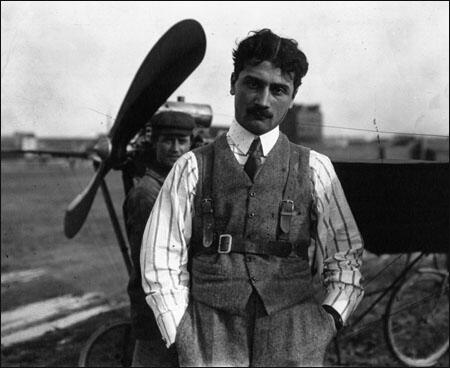
On this day in 1930 the secretary of state for air, Christopher Thomson, Baron of Cardington, was killed when a passenger of the R.101 airship that crashed. Although from a wealthy background, Brigadier-General Thomson joined the Labour Party. When Ramsay MacDonald formed the first Labour government in 1924, he raised Thomson to the peerage and appointed him as secretary of state for air. Thomson was largely responsible for the government's decision to start a programme of airship building that included R.100 and R.101.
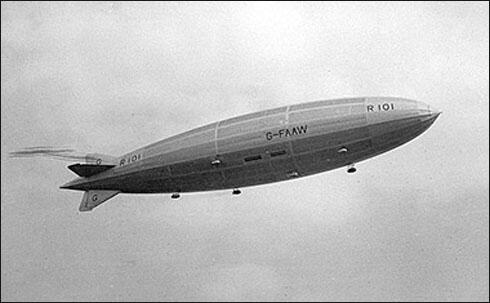
On this day in 1936 the Jarrow March, led by Ellen Wilkinson, sets off for London. Wilkinson, was the daughter of a worker in a textile factory, developed an interest in socialism after reading Merrie England by Robert Blatchford. At the age of sixteen Ellen joined both the Independent Labour Party after hearing a speech made by Kathleen Glasier. In the 1935 General Election Wilkinson was elected as MP for Jarrow. The town had one of the worst unemployment records in Britain. In 1935 nearly 80% of the insured population was out of work. Of the 8,000 skilled manual workers in Jarrow, only 100 were working. In 1936 Wilkinson organised a march of 200 unemployed workers from Jarrow to London where she presented a petition to parliament calling for government action. Wilkinson later wrote an account of the Jarrow Crusade and its outcome called The Town That Was Murdered (1939).
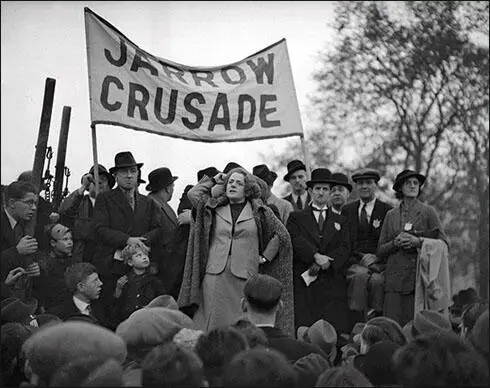
On this day in 1938 Winston Churchill attacks the Neville Chamberlain's government for the first time over the subject of appeasement. In the House of Commons he argued: "After the seizure of Austria in March we faced this problem in our debates. I ventured to appeal to the Government to go a little further than the Prime Minister went, and to give a pledge that in conjunction with France and other Powers they would guarantee the security of Czechoslovakia while the Sudeten-Deutsch question was being examined either by a League of Nations Commission or some other impartial body, and I still believe that if that course had been followed events would not have fallen into this disastrous state. France and Great Britain together, especially if they had maintained a close contact with Russia, which certainly was not done, would have been able in those days in the summer, when they had the prestige, to influence many of the smaller states of Europe; and I believe they could have determined the attitude of Poland. Such a combination, prepared at a time when the German dictator was not deeply and irrevocably committed to his new adventure, would, I believe, have given strength to all those forces in Germany which resisted this departure, this new design."
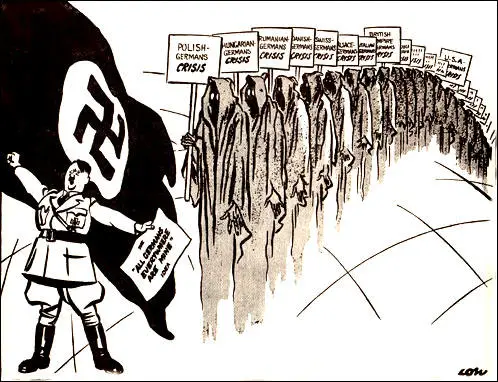
On this day in 1942 5,000 Jews in the city of Dubno, in the Soviet Union massacred. On 31st July, 1941, Hermann Göring issued orders to Reinhard Heydrich to submit a comprehensive plan for "a final solution of the Jewish question." The meeting to discuss the plan, the Wannsee Conference, was held on 20th January 1942. Heydrich chaired the meeting and also in attendance were fifteen leading Nazi bureaucrats, including Heinrich Muller, Adolf Eichmann and Roland Friesler. The conference was opened by Heydrich, who declared that he was the plenipotentiary for the "final solution of the Jewish question. He then reviewed the emigration problem. Heydrich admitted that there had been a plan to deport all Jews to the island of Madagascar but this had been abandoned after Operation Barbarossa. After discussing the matter with Adolf Hitler it had been decided to evacuate all Jews to the east. The evacuees would be organized into huge labour columns. He added that a majority would "fall through natural diminution". The survivors of this march would be dangerous because they had shown that they were strong and could in the future "rebuild Jewish life". Therefore they would be "regarded as the germ cell of a new Jewish development" and should be "treated accordingly."
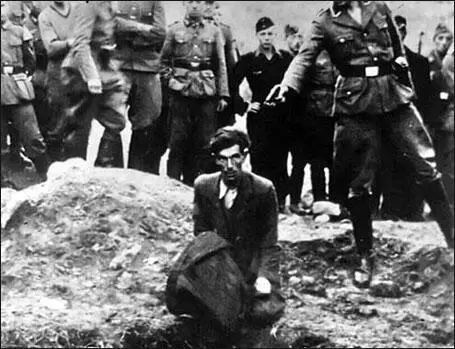
On this day in 1942 at Auschwitz, 90 French-Jewish women beaten to death by prison guards In April, 1945, Germany surrendered. Rudolf Hoess, the commandant of Auschwitz, managed to avoid capture and worked on a farm. He was eventually captured and at his trial admitted: "I commanded Auschwitz up to 1st December 1943, and estimate that at least 2,500,000 victims were killed and disposed of there by gassing and burning; at least a further half million died of starvation and illness, which makes a total of 3,000,000 dead. The number represents about 70 or 80 per cent of all the people who were sent to Auschwitz as prisoners. Very young children, being incapable of working, were killed as a matter of principle."
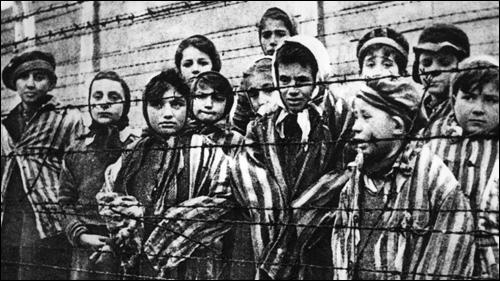
On this day in 1944 Yip Harburg's musical Bloomer Girl premieres in New York City. His first great success was Brother Can You Spare a Dime (1932), a song about unemployment. Harburg moved to Hollywood where he wrote the lyrics for a series of musicals including Gold Diggers (1933), The Singing Kid (1936), The Wizard of Oz (1939), a film for which he won an Academy Award, Cabin in the Sky (1943), Can't Help Singing (1944), California (1946) and Centennial Summer (1946). These films included songs such as Only a Paper Moon, April in Paris, Over the Rainbow, Old Devil Moon and If This Isn't Love.
Harburg was a socialist and Harburg, who had been a member of several radical organizations, was named in Red Channels. This pamphlet, distributed to organizations involved in employing people in the entertainment industry, listed 150 people who had been involved in promoting left-wing causes. Harburg was blacklisted in Hollywood and after two years without film work, returned to New York where he wrote Broadway shows. As a result of the blacklist, Harburg's highly successful Broadway musical, Finian's Rainbow, was not filmed until 1968. Edgar Yip Harburg died in Los Angeles on 5th March, 1981.
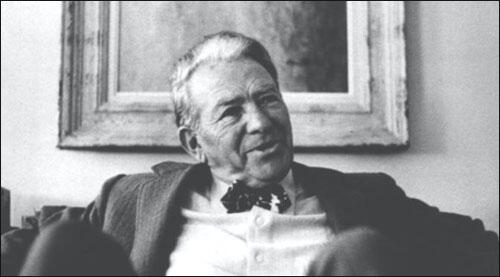
On this day in 1946 Newcastle United equals English Football League record for biggest winning margin in a 13-0 thrashing of Newport. Len Shackleton scored six of the goals.
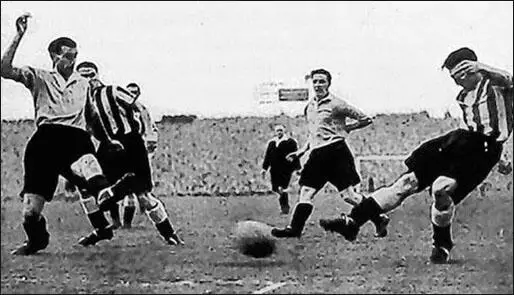
On this day in 1947 Harry Truman makes the first Presidential address televised from the White House.
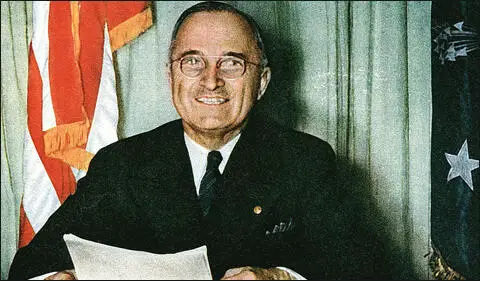
On this day in 1960 the Labour Party Conference at Scarborough, voted for two unilateralist resolutions, from the transport workers and the engineers, were carried and the official policy document on defence was rejected. Hugh Gaitskell, who was fully committed to the nuclear deterrent and thought these were disastrous decisions and made a passionate speech where he stressed that he would "fight and fight and fight again to save the party we love".
